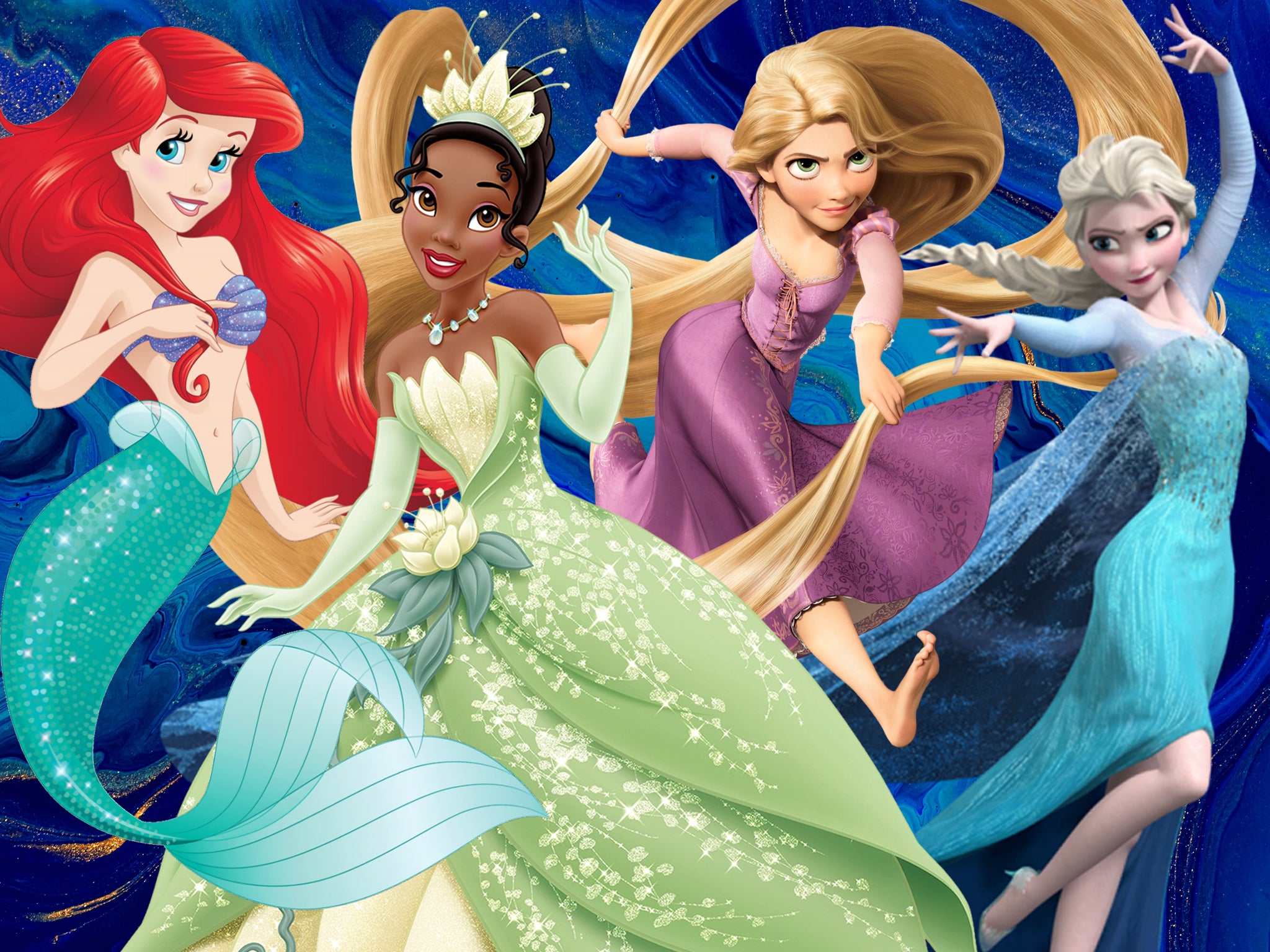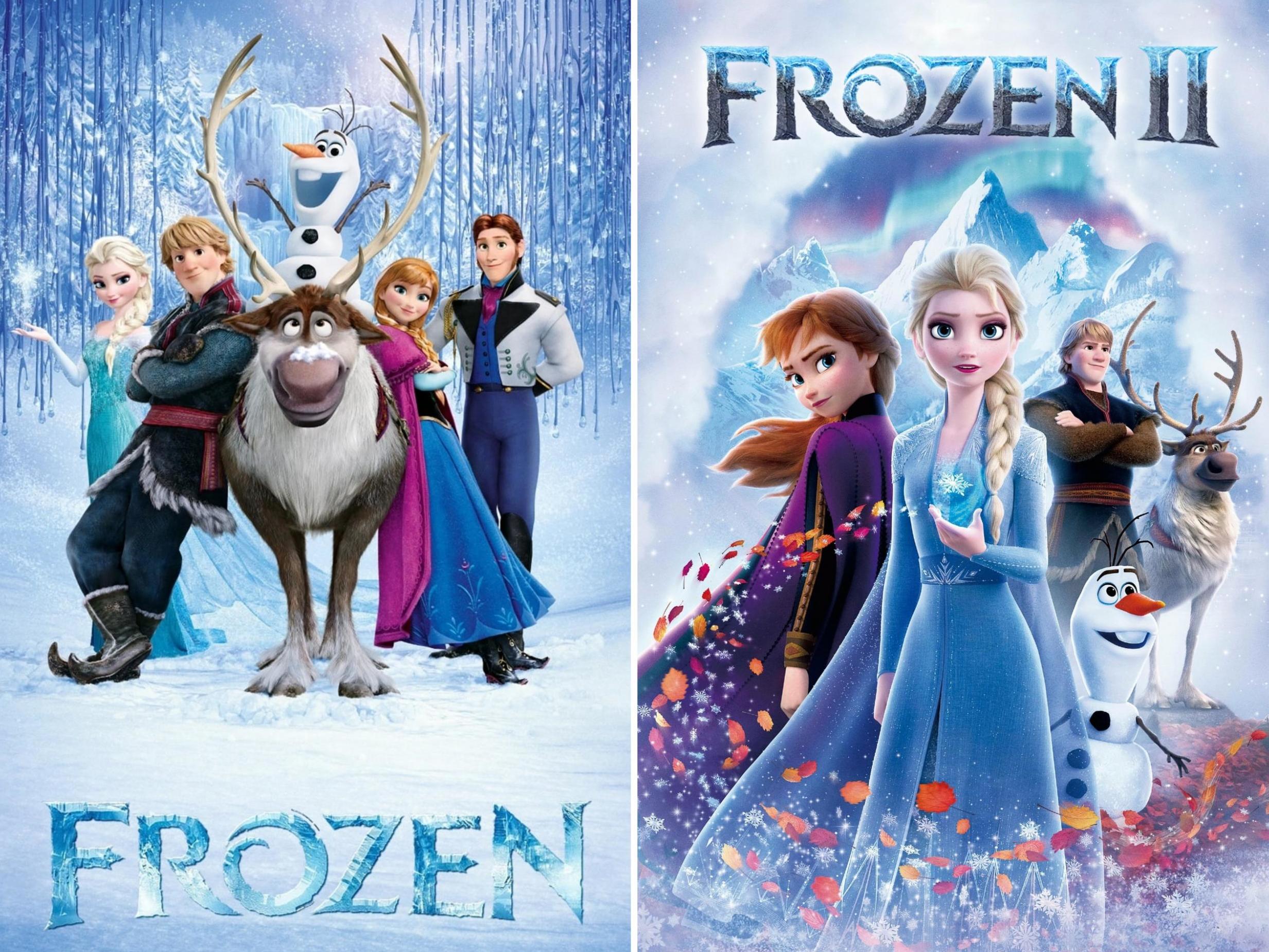Frozen out: The long history of Disney Animation being ashamed of its female leads
As the studio would have it, boys will only be engaged by female characters in movies if they’re somehow tricked into seeing them, writes Adam White


Your support helps us to tell the story
From reproductive rights to climate change to Big Tech, The Independent is on the ground when the story is developing. Whether it's investigating the financials of Elon Musk's pro-Trump PAC or producing our latest documentary, 'The A Word', which shines a light on the American women fighting for reproductive rights, we know how important it is to parse out the facts from the messaging.
At such a critical moment in US history, we need reporters on the ground. Your donation allows us to keep sending journalists to speak to both sides of the story.
The Independent is trusted by Americans across the entire political spectrum. And unlike many other quality news outlets, we choose not to lock Americans out of our reporting and analysis with paywalls. We believe quality journalism should be available to everyone, paid for by those who can afford it.
Your support makes all the difference.For as long as Disney has been beholden to its animated princesses, it has also been oddly ashamed of them. Frozen II, released in cinemas this week, has positioned the formerly estranged sisters and rebel princesses Anna and Elsa at the centre of its promotional materials, reflecting how rapidly the women became household names in the wake of the first film. Hell, an entire generation of children has more or less been raised by the pair.
But if your knowledge of the Frozen franchise was limited to its earliest promotion, notably its first teaser trailer, you may be surprised to learn that they’re even in the film: the star of Frozen’s first teaser was Olaf, the clumsy snowman conjured from the imagination of the film’s actual leads.
That trailer, a cute bit of dialogue-free physical comedy that also featured the loveable reindeer Sven, felt like a nod towards the Ice Age franchise, anchored as it was by an unlucky-with-his-nuts squirrel named Scrat. But it also stands as a wild misrepresentation of the film itself, or at least an early misreading of where the film’s appeal truly lay. Suspecting any kind of ulterior motive would be unfair – if Disney didn’t already have form with this kind of thing.
The studio has always had its greatest victories with princesses, from the early wonder of Sleeping Beauty (1959) to the progressive charm of Mulan (1998). They’ve also been divisive figures within Disney itself, however. If a male-dominated animated film bombs, Disney has a tendency to regroup and move on to the next one. If a female-dominated animated film bombs, it’s a statement.
The original Frozen was developed at a period of peak girl-panic within the walls of Disney Animation. Despite being scripted with the title Anna and the Snow Queen, it was ultimately reimagined with the far more gender-neutral moniker we recognise today. Three years prior, a project known as Rapunzel became Tangled (2010), followed up by the overtly fairy-tale The Bear and the Bow becoming Disney/Pixar’s ambiguous-sounding Brave (2012).
As articulated by a number of Disney executives at the time, this was apparently the fault of a tiny African-American girl. The Princess and the Frog (2009), one of the last Disney films to be released in theatres and entirely hand-drawn, was celebrated for introducing a black princess, Tiana, to the Disney canon. But her vehicle was also a box-office disappointment, struggling to double its $105m budget. Making things even harder for the film, it had the misfortune of opening a week before James Cameron’s Avatar, until recently the most successful movie of all time.
Whether it was right or not, Disney blamed the gender-specificity of its title for alienating young boys. “Based upon the response from fans and critics, we believe [the box office] would have been higher if it wasn’t prejudged by its title,” Ed Catmull, former president of Pixar and Disney Animation Studios, told the Los Angeles Times.
It also meant retitling a number of female-centric animated films then in production. Despite some controversy, Rapunzel became Tangled within three months of the release of The Princess and the Frog. The film’s marketing also beefed up the presence of Rapunzel’s love interest Flynn Rider, promoting him as a swashbuckling hero in order to appeal to young boys. “We did not want to be put in a box,” Catmull explained. “Some people might assume it’s a fairytale for girls when it’s not. We make movies to be appreciated and loved by everybody.”
Then, in November 2010, shortly before Tangled’s release, Catmull explained that Disney would be phasing out “princess movies”, arguing that audiences had grown tired of them. “Films and genres do run [their] course,” he told the Los Angeles Times. The report also declared that Snow White, Sleeping Beauty, Ariel and Jasmine “were all born in the 20th century. Now, different kinds of Disney characters are elbowing their way into the megaplexes and toy aisles, including … Toy Story’s Buzz Lightyear and Woody, Captain Jack Sparrow from Pirates of the Caribbean and a platoon of Marvel superheroes.”
“Do you notice something about the characters listed above?” asked journalist Margot Magowan in Ms magazine. “Because neither the Los Angeles Times reporter or the Disney execs mention in the article that we are losing girls and getting boys.”
Such concern, as fair as it was at the time, ultimately proved ill-founded. And that was despite Catmull putting the brakes on Anna and the Snow Queen following the release of The Princess and the Frog. It wasn’t until late 2011, after the $600m gross of Tangled, that it was resurrected as Frozen. As for what helped Tangled score a much-needed win for the Disney princess genre? In the eyes of Disney, it was because it wasn’t promoted as a Rapunzel movie.
“There was an audience perception that these movies were just for little girls but when boys, men, whatever, actually see these movies, they like them,” former chief creative officer of Disney and Pixar John Lasseter told The Telegraph in 2014. “So, on Rapunzel, we rolled up our sleeves, we changed the name and we called it Tangled. We did marketing that made the people who would not normally show up say, ‘Hey, this looks pretty good.’ Tangled was then a big hit and it opened the door for more of these movies.”

Trends within Disney Animation, like every other studio and every other genre in Hollywood, are cyclical. But it has often been its female-fronted movies that have inspired the most fearmongering, while female-fronted hits haven’t inspired as many imitations in their wake as you would imagine. Both 1995’s Pocahontas and 1998’s Mulan were among Disney Animation’s biggest hits in the Nineties, scoring Oscar nominations and millions of dollars at the box office. But Disney then didn’t pursue another female-led animated movie for more than a decade.
The anxiety goes further back. In 1989, the newly-installed Disney CEO, Jeffrey Katzenberg, didn’t have enormous faith in The Little Mermaid. He assumed, because it was a “girl’s film”, that it wouldn’t make as much money as the previous year’s Oliver and Company – a spin on Oliver Twist with cats and dogs, and an almost entirely male cast. The Little Mermaid did, of course, go on to become a classic, the first animated film in history to gross more than $100m in its initial run. But the progressive, cosy narrative that surrounds The Little Mermaid today has also threatened to obscure Disney’s initial fears over how feminine it was.
Unearthed in May, one of the promotional adverts used to sell the film to TV audiences in 1989 explicitly attempts to erase Ariel, the Little Mermaid herself, from her own movie. Instead it’s her father, King Triton, who is implied to be the film’s lead – a hero on a quest to rescue his kidnapped daughter from the clutches of the evil sea witch Ursula.
“From Walt Disney Pictures – he’s the King of the Sea,” the advert’s dramatic narrator intones. “She is his evil enemy, and they’re in a fight to the finish. He’s trying to save his daughter, the Little Mermaid, from her evil grasp!”
A generous reading of the trailer would be that it was a product of its time, rooted in Eighties-Hollywood terror that a children’s movie anchored by a female character would have strictly limited appeal. But the misrepresentation of that Little Mermaid trailer isn’t an anomaly. Another TV spot positions the Jamaican-accented crab Sebastian as the film’s lead, while an eagerness to hide a predominantly female cast is even there in Frozen’s first full-length trailer, which suggests a large ensemble of characters each granted similar levels of importance.
You can’t fault Disney for attempting to appeal to all people all at once. It is, after all, a corporation driven by money, as much as it’s adopted a feather-light persona of representative nobility in recent years. But that it has gone to pains to hide the sheer girliness of a number of its animated films also pushes an unfortunate message – that work specifically aimed at or about women is inherently secondary and risky, and that boys will only be engaged by female characters in movies if they’re somehow tricked into seeing them.
It’s especially odd because so much of our cultural Disney nostalgia is rooted in stories of princesses and rebellious young women. In the recent run of live-action reboots of the Disney canon, it’s been the likes of Dumbo and Christopher Robin that have stumbled, while Beauty and the Beast, Maleficent and Alice in Wonderland have been among its biggest hits.
Disney is, to its credit, currently embracing animated and animation-adjacent projects driven by female leads. Just as Frozen gave way to 2016’s Moana, Frozen II will be followed by 2020’s Raya and the Last Dragon, a fantasy epic about a young warrior girl searching for a dragon (voiced by Cassie Steele and Awkwafina, respectively). In addition, a live-action Mulan is scheduled for release in 2020, while 2021 will see a live-action Little Mermaid and a live-action origin story for 101 Dalmatians villain Cruella de Vil.
Based on history, however, it’s hard not to feel anxious that one high-profile misfire could be enough to reshuffle the deck – seen as a reflection of cultural trends rather than an individual project that just didn’t fly.
As much as Frozen II feels like a nod towards a more representative and unashamed future, animated female characters as the stars of their own movies remain on thin ice.
Join our commenting forum
Join thought-provoking conversations, follow other Independent readers and see their replies
Comments